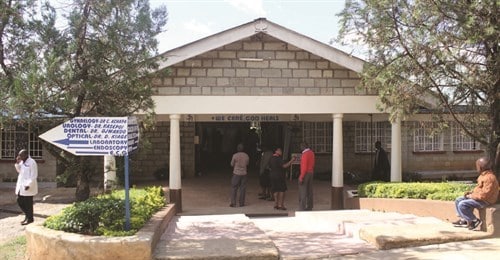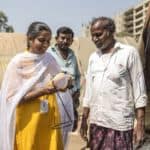Two-Sided Mobile Platform Creates ‘Network Effect’ to Help Patients, Health Clinics
A large percentage of people in developing countries seek health care in private hospitals, clinics and pharmacies and pay for their care out of pocket. This private health sector is extremely fragmented, quality of care is often poor and prices charged to out-of-pocket paying patients are extremely high. Two interlinked programs conceived by a group in the Netherlands are attempting to address this problem at large scale. Both have achieved remarkable growth within a short period after their start.
The first is the Medical Credit Fund (MCF). The idea behind the MCF is simple, but powerful. Small to medium-sized clinics and hospitals have poor access to capital. Lack of capital means they cannot upgrade/expand their physical infrastructure, invest in new equipment or reengineer their service delivery processes. Banks and mainstream sources of capital shy away from providing equity or debt to smaller clinics and hospitals. When they do, it is at extremely high interest rates. Reasons are manifold. A commonly cited one is that smaller clinics and hospitals have some “unknown risks” which keep banks away from investing in them. MCF reduces a part of the “unknown risks” of commercial banks when they consider lending to small to medium-sized health care clinics. With risk sharing from MCF, commercial banks lend more actively to private clinics and hospitals. The clinics use the loans to carry out facility infrastructure upgrades, which leads to higher quality of service. MCF recognizes that service quality is not merely about facility infrastructure, but clinical and business processes need to be improved as well. Working with its partner organization PharmAccess, it ensures that all clinics and hospitals in its loan portfolio join a clinical and business improvement program which helps them achieve higher quality in the overall care delivery processes.

Since its start in 2010, MCF has disbursed over $22 million in loans to over 850 health care institutions and has a repayment rate of over 97 percent. Over time, it has also been able to pass a larger share of the risk back to the banks themselves. Some banks have started to realize that investing in small to medium-sized health clinics isn’t such a bad investment after all. MCF is also a perfect example of blended financing for social impact. It has received a combination of grants, first loss capital and submarket rate debt from a variety of sources such as USAID, the Dutch government, Calvert Foundation and OPIC.
A more recent start is M-TIBA, which uses technology to address the problem of out-of-pocket payments, high price of service and lack of data.
At first glance, M-TIBA appears to be simply a mobile technology-enabled health savings account. Users can save money into their own M-TIBA account and, when the need arises, use it to pay for accessing health care services at providers who accept M-TIBA. Health insurance experts would argue (rightfully) that M-TIBA does not include any form of risk pooling – it is only a prepayment mechanism so it doesn’t adequately buffer against catastrophic expenditures. But building well-functioning health insurance systems are painstakingly hard and often come with a complex political economy. M-TIBA is a prepayment mechanism which at least solves a part of the problem. In addition to their own saved money, users can also receive money from family members and direct payments from international donors. M-TIBA provides an implicit guarantee to the sender that the money will be spent by the user for health care services only.
Upon closer examination, it becomes evident that M-TIBA is in fact a two-sided platform – patients/users on one side, and health clinics on the other – generating value for both groups. If designed well, value for each additional participant should increase as the number of participants on each side grows – a phenomenon called “network effect.” Understanding and enhancing the value it creates for both sides of the platform will be key to M-TIBA’s growth strategy. The first step is to ensure that the IT behind the platform is smooth and allows frictionless participation from the users and the clinics.
Users join M-TIBA for its utility as a flexible health savings account. M-TIBA carefully analyses the payments it makes to the providers for diagnosis/treatment errors, high prices and over-billing. It also enables users to keep a record of their visits and payments made without any additional effort. Together, these further enhance the user’s benefit of joining M-TIBA.
On the other side of the platform are health care providers who join the M-TIBA network and accept payments through M-TIBA. Most small to medium-sized clinics and hospitals do not have much in terms of business process for registering patients, billing and follow-up. They have no systematic data about their patients’ episodes of care and as a result cannot generate insights into common conditions, repeat visits and future revenue. In fact, lack of clear data and robust predictable revenue projections is one reason why banks have been unwilling to provide loans to such health clinics. M-TIBA equips any clinic which joins its network with an efficient process to manage patient registration, billing and data capture at all stages of the patient journey. Clinics can also access loans from the Medical Credit Fund based on their turnover on the M-TIBA platform.
An initial concern was that providers would be hesitant to accept M-TIBA payments instead of cash. Cash is viewed as the quickest way to achieve short revenue cycles. Previous experiences of clinics and hospitals accepting insurance payments have not been good. Most had experienced long delays in receiving payments. To develop trust and calm any fears about late payment, M-TIBA guarantees that all clinics receive their payment within a week of providing service. Some clinics are happy that they don’t have to deal with all the challenges which come with receiving cash from patients and depositing it at the end of the workday.
Some would ask: In the past decade, we have seen many small projects and initiatives to demonstrate that mobile technology can improve health services delivery in the developing world. Isn’t M-TIBA one more “me-too” in that busy space? Well, none of them have the large scale that M-TIBA has achieved in its first six months. It has over 500,000 registered users within six months of its launch, and on average 4,000 new people sign up for M-TIBA every day in Kenya alone. It will also be expanding in other countries soon. Third-party payers, including government-run insurance companies and private insurers, are already starting to leverage M-TIBA. Part of its success comes from the fact that it was developed in partnership with Safaricom in Kenya. Most of us know the tremendous success of M-PESA, which now does more than 10 million transactions every day and processes more than six mobile loans every second. With Safaricom behind it, M-TIBA is poised to reach a similar scale. When you partner with someone who has such scale, hockey stick growth comes naturally.
As it embarks on the next level of growth, M-TIBA must keep customers on both sides of its platform happy. In many instances, two-sided platforms which have achieved hyper scale had to subsidize customers on one side of the platform in order to attract customers on the other side. Would M-TIBA follow such a strategy? Is there a role for MCF financing as an incentive for more clinics to join the network? More generally, how does M-TIBA further strengthen its network effects? Is it going to invest significantly in its ability to capture and analyze large amounts of data? How else will it increase the platform’s value to all participants? Will global donors act like large venture capital firms who have provided millions of dollars to two-sided platforms in hopes of achieving very large scale and network effects?
Your thoughts and comments, please!
Prashant Yadav is a senior fellow at the William Davidson Institute and a visiting scholar at Harvard Medical School. He adds: “I thank Onno Schellekens, Monique Dolfing-Vogelenzang and Dorien Mulder for sharing insights with me. All errors and omissions are entirely my responsibility.”
Photo at top courtesy of Carepay
- Categories
- Health Care, Technology



